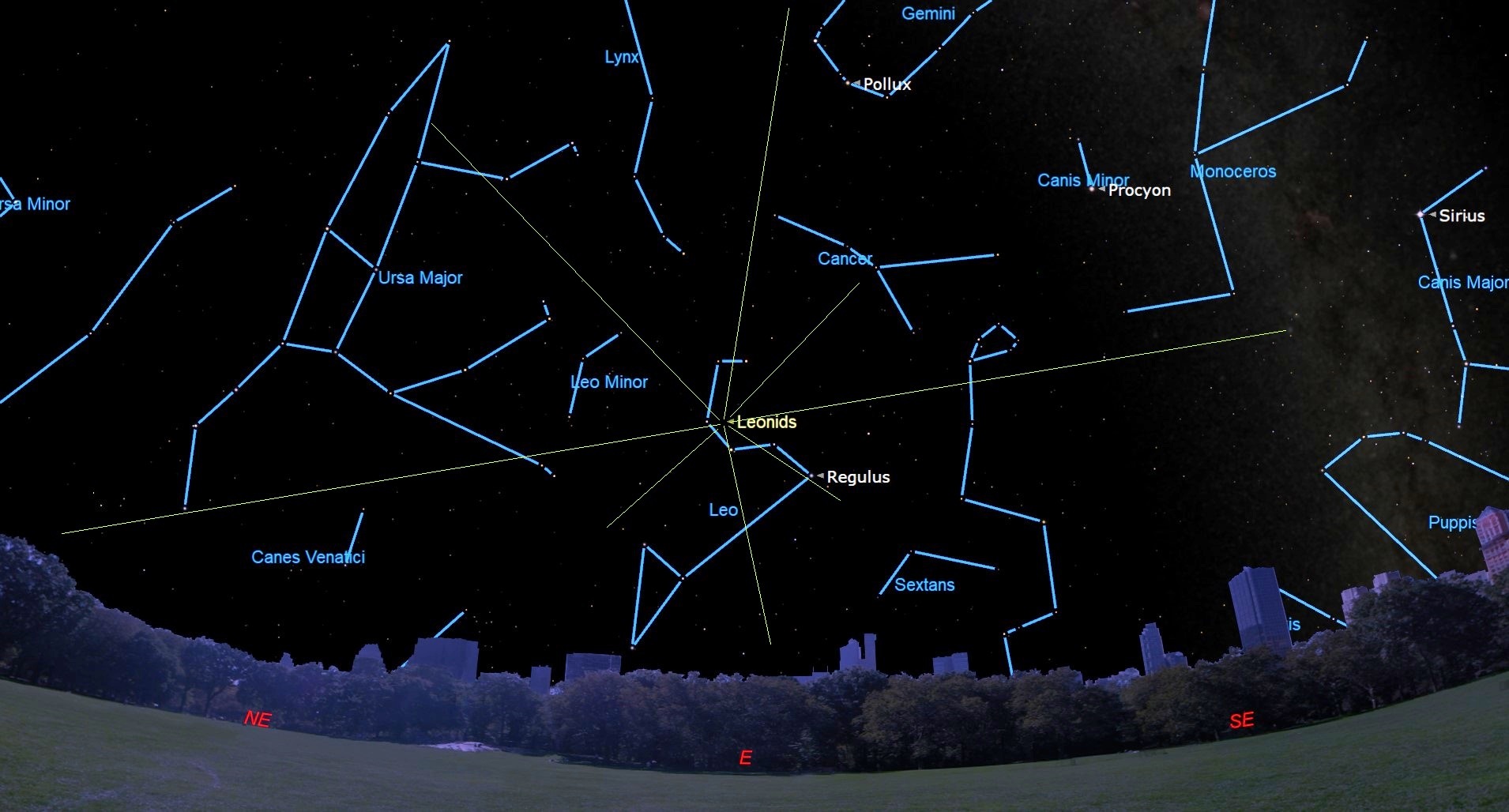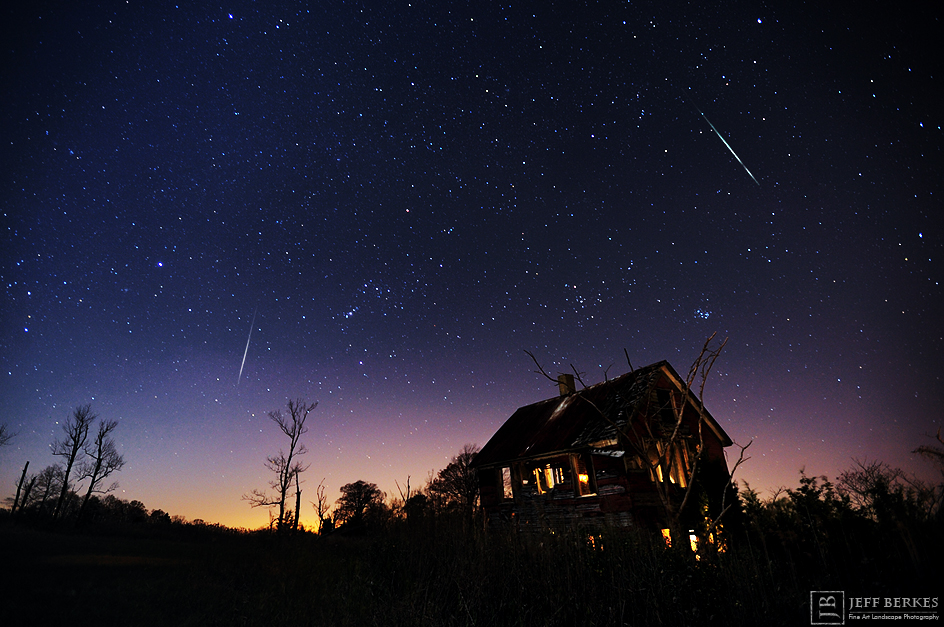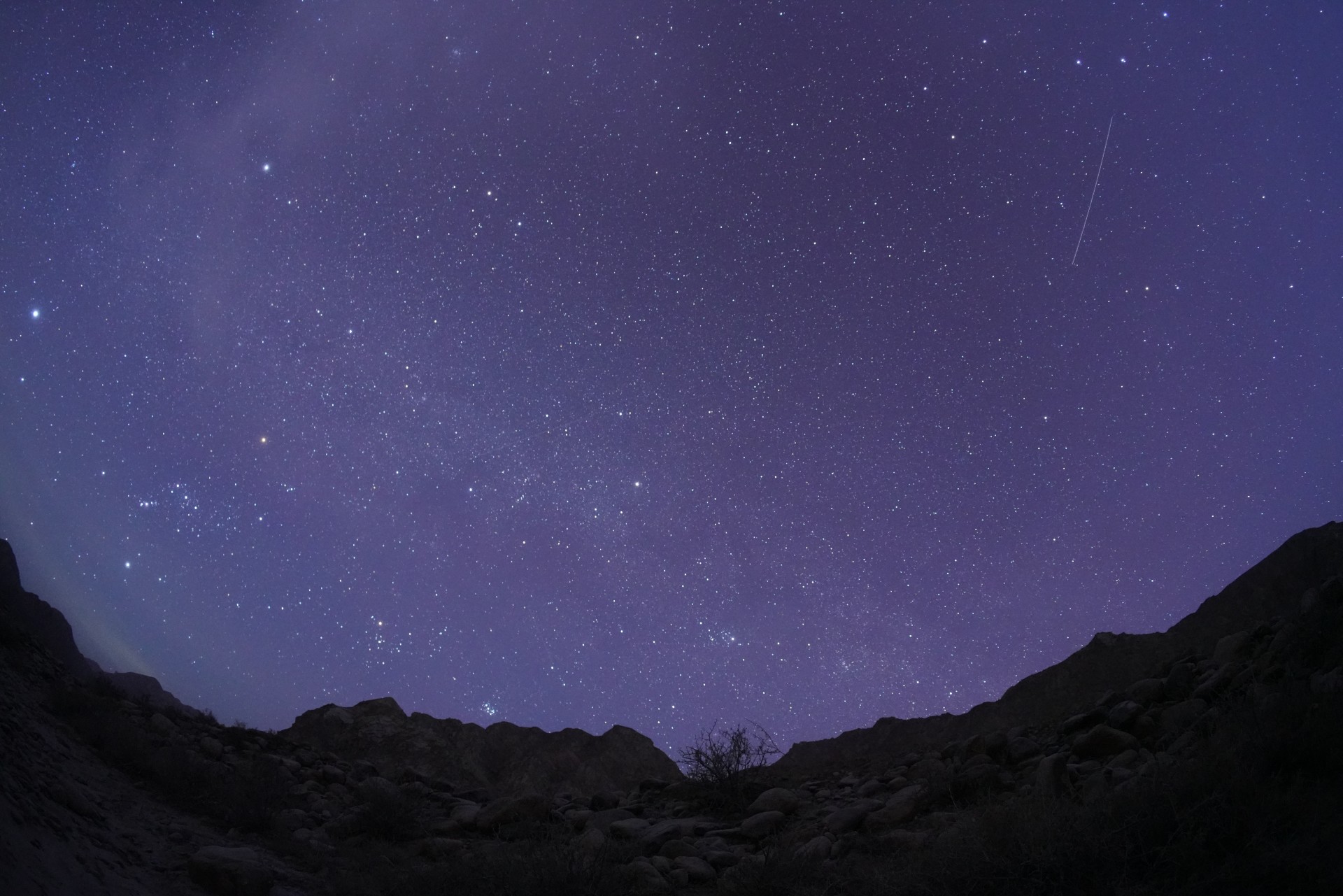
Probably the most famous of the annual meteor showers will soon be reaching its maximum: The Leonids. These ultrafast meteors are due to reach their peak on Saturday morning (Nov. 18).
The Leonid meteor shower is known for producing some of the most amazing meteor displays in the annals of astronomy. Most notable are meteor storms such as in 1799, 1833 and 1966 when meteor rates of tens of thousands per hour were observed. More recently, in 1999, 2001 and 2002, lesser Leonid displays of up "only" a few thousand meteors per hour took place.
Unfortunately, the negative impact of those turn-of-the-century Leonid showers, is that many were given the impression that they can expect a similar occurrence of celestial fireworks from the Leonids every year. So, it is important to stress right here at the outset that any suggestion of a spectacular meteor Leonid display this year is, to put it mildly, overly optimistic.
So, should you be expecting a memorable meteor shower show early on Saturday morning, we're sorry to break this to you, but the 2023 version of the Leonids is more than likely going to be a disappointment, since it probably will be weak and there likely will be long stretches when not a single one will be seen.
Related: Meteor showers 2023: When is the next one?
How to see the Leonids this year

Want to see the night sky up close? We recommend the Celestron Astro Fi 102 as the top pick in our best beginner's telescope guide.
The International Meteor Organization (IMO) forecasts hour rates of 10 to 15 per hour with a peak at around 5:00 UT on Nov. 18. The moon is a waxing crescent and will set before 8:30 p.m. on Friday evening and will pose no interference whatsoever. But whatever forecast you trust, be mindful that even at their very best, Leonids are expected to dart across your line of sight on an average of once every 3 to 6 minutes. And that's only assuming you have a wide-open view of the entire sky and are blessed with dark, non-light polluted conditions.
Watching a meteor shower is a relatively straightforward pursuit. It consists of lying back, looking up at the sky and waiting. Keep in mind that any local light pollution or obstructions like tall trees or buildings will further reduce your chances of making a meteor sighting.
Leo does not start coming fully into view until the after-midnight hours, so that would be the best time to concentrate on looking for Leonids. As dawn is about to break at around 5 a.m. local time, The Sickle will have climbed more than two-thirds of the way up from the southeast horizon to the point directly overhead (called the zenith).
Also, because the Leonids are moving along in their orbit around the sun in a direction opposite to that of Earth, they slam into our atmosphere nearly head-on, resulting in the fastest meteor velocities possible: 45 miles (72 km) per second. Such speeds tend to produce bright meteors, which leave long-lasting streaks or vapor trains in their wake.
A mighty Leonid fireball can be quite spectacular, but such outstandingly bright meteors are likely to be very few and very far between this year (if any are seen at all).

Comet crumbs
The Leonids received their moniker because the shower's emanation point — from where the meteors seem to fan out — is located within the constellation of Leo, the Lion, from within the backward question mark pattern of stars known as "The Sickle."
The meteors are caused by periodic Comet Tempel-Tuttle, which sweeps through the inner solar system every 33.3 years. Each time the comet passes closest to the sun it leaves a "river of rubble" in its wake; a dense trail of dusty debris. A meteor storm becomes possible only if Earth were to score a direct hit on a fresh dust trail ejected by the comet over the past couple of centuries.
The "lion's share" (no pun intended) of comet dust can be found just ahead and trailing behind Tempel-Tuttle. That comet last swept through the inner solar system in 1998. That's why spectacular meteor showers were seen in 1999, 2001 and 2002, with declining numbers thereafter.
In 2016 Tempel-Tuttle reached aphelion, that point in its orbit, as far from the sun as it can get: 1.84 billion miles (2.96 billion km). Now the comet is on its way back toward the sun and inner solar system and will sweep closest to the sun again in May 2031.

A meager year in 2023
But it's also, in the general vicinity of the comet where the heaviest concentrations of meteoroids are as well. In contrast, at the point in the comet's orbit where we will be passing by on Saturday morning, there's only a scattering of particles; bits of comet debris that crumbled off the comet's frozen nucleus perhaps a millennia or two ago.
So, the 2023 Leonids are expected to show lean activity this year. According to a highly regarded Russian expert in meteor shower predictions, Mikhail Maslov, forecasts indicate a "moderate" maximum, which he suggests will stay approximately at the same level (about 15 per hour) during the period from 0:00 to 12:00 UT on Nov. 18.
Canadian meteor forecasters, Margaret Campbell-Brown and Peter Brown, in the 2023 Observer's Handbook of the Royal Astronomical Society of Canada are a little more optimistic, in suggesting rates of up to 20 per hour with as maximum occurring at 0600 UTC on Nov. 18. That comes to around midnight for eastern and central North America.
A look ahead
The good news is that as Comet Tempel-Tuttle draws closer to the sun, the Leonids are expected to slowly improve. According to Mikhail Maslov, a greater preponderance of bright meteors is possible, especially in 2025. But it will not be until 2033, when both Maslov and another well-known forecaster, Frenchman, Jeremie Vaubaillion, predict hourly rates of several hundred or more possible. But the very best years of the next Leonid cycle will be in 2034 and 2035.
In 2034, debris shed by Tempel-Tuttle from the year 1699 should lead to anywhere from 400 to 1600 Leonids per hour, followed some hours later by another surge of activity from material shed by the comet in 1767; 250 to 1000 Leonids are possible. Finally, in 2035, 300 to 900 Leonids are possible from a dusty meteoroid trail dating back to 1633.
But if you can't wait until then, here's some good news: A far more prolific meteor shower is coming our way in less than a month: The December Geminids, now considered to be the best meteor shower of the year, producing over 100 per hour. They are expected to peak on Wednesday night, Dec. 13. Space.com will provide you with all the details as we get closer to that date. So, stay tuned!
If you want to get an up-close look at the stars or planets during the new moon or any other time, our guides to the best telescopes and best binoculars are a great place to start.
And if you're looking to take photos of the Leonids or the night sky in general, check out our guide on how to photograph meteors and meteor showers, as well as our best cameras for astrophotography and best lenses for astrophotography.
Joe Rao serves as an instructor and guest lecturer at New York's Hayden Planetarium. He writes about astronomy for Natural History magazine, the Farmers' Almanac and other publications.







